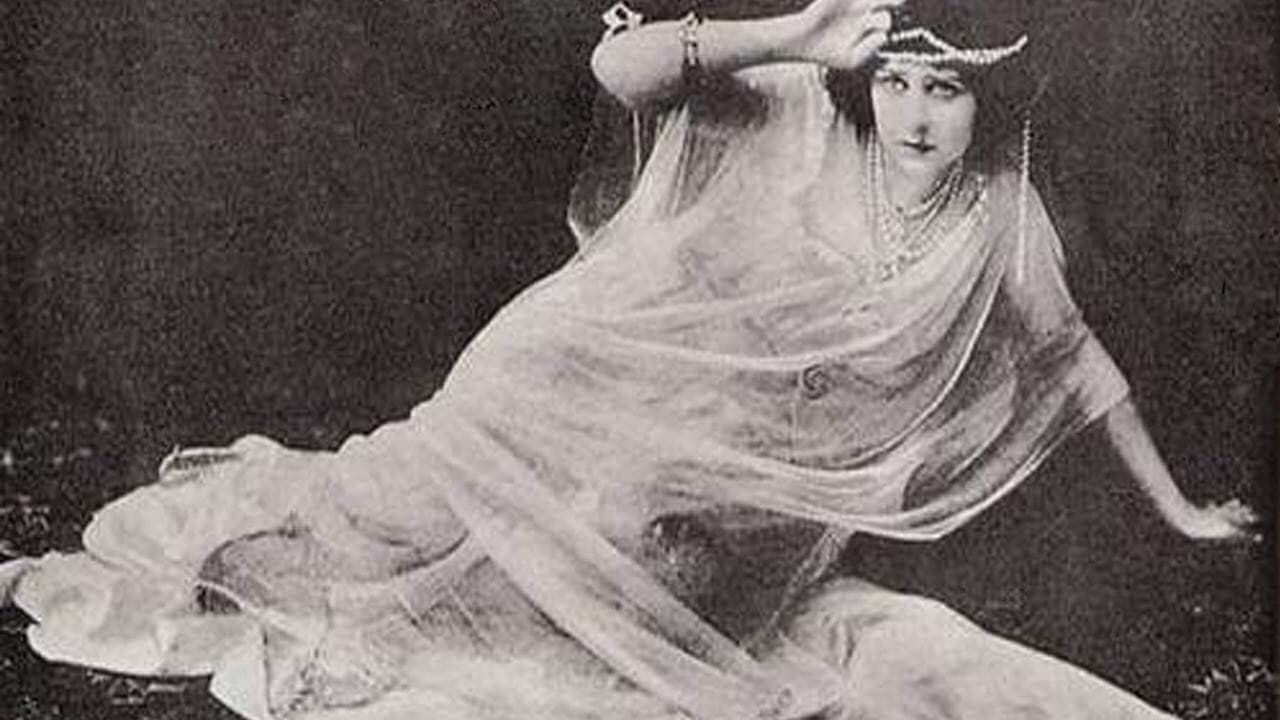

Quite a remarkable production, a key film on the continuum of American film that set the bar higher. Considering King Tut's tomb wouldn't be found for another ten years, the sets and costumes were well done, funny chubby Egyptian figures painted on the walls. Thank goodness D.W. Griffith was compelled to innovate a few years later but restoration funds were well spent on this historical film.Cleopatra is a very stagey film. Nothing happens here that could not happen in a theatre. Genuine exteriors are almost non-existent, and even simple exteriors, requiring only a field and a tree or two, are duplicated with backdrops. This of course was in an era when the theatre still commanded a good deal more respect than did the cinema. Remember that one of the earliest film companies, a precursor to Paramount, was originally formed by Zukor as Famous Players in Famous Plays. Also note that the extras seem to have nothing really to do. They are all standing around seeming to look for direction. Most of the film is very long shots, once again, going back to theatre roots. The score is terrible and does not fit the film at all. I don't care for avant-garde stuff and the music definitely falls into that category. If someone were going to use that type of music I would think it would be better suited to something like a German expressionist style film, not a period piece "historical" type film. That noise Ms. Gardner (Cleopatra) was making at the beginning was just odd and distracting. Then the actual "singing" (if you can call it that because the words were pretty much unintelligible) was again distracting. I was trying to figure out what she was saying and ended up missing part of the movie. However,the sounds and the score is somebody in modern times trying to augment the film, so I can hardly blame Ms.Gardner for it one hundred years after the fact.I'm glad this film was restored, as it's an interesting piece of film history. Before the money men got involved there was a place for women behind the camera in writing and directing as well as owning their own studios as Helen Gardner did. It's also very interesting that she made many feature length films (80-90 minutes) as opposed to the one and two reelers of the time. Cleopatra is listed as being the first feature length film (6 reels) made in the U.S., although De Mille always incorrectly tried to claim that "The Squaw Man" - which he directed -was the first feature length film.Worthwhile for the novelty of it all.
... View MoreLike other people, I found the sound track to be rather annoying.I think that the main problem with this and similar films is that it appears that the actors forgot that they were making a silent movie and that no one could hear what they were saying.You have much too long sequences where two people are talking to each other, generally with not even many gestures, and only occasional subtitles.Of course this was a very early film, and people were feeling their way, but lacking both sound and any interesting settings, this turns out to be pretty dull.The peculiar movement of the barge as it moves on and off scene does give it a surrealist appearance.
... View MoreI'm amazed to see a 1912 feature that's almost 90 minutes long. By contrast, "From the Manger to the Cross" is under 70 min. The tinting and restoration are good, the modern music by Chantal Kreviazuk is interesting if unnecessary (there's no reason to be turned off by it--you can always play your own music!). The film is not in "pure" tableau style but in modified tableaus. That is, there is some cross-cutting from different locations, and dialogue cards do interrupt the shots. The first scene is even somewhat distracting in its cutaways to a man who is a short distance away. During the battle of Actium, the camera suddenly goes in for a series of near close-ups of Cleopatra and Antony from the waist up, and the entire scene is told in these alternating shots with captions. (A way to avoid staging a battle.) The scene in which she barges down the Nile and seduces Antony is a typical example of "film d'art" tableau style, with only dialogue interrupting the shot occasionally. The major lengthy sequence at the end, however, begins in two locations: in Cleo's chamber on an upper floor and outside on the ground below, and Antony is raised up through the window on a rope, then for the rest of the complex scene the camera pans right and left as called for by the action. Fascinating and typically noble.
... View MoreThis early silent (1912) is a bit creeky (canvas flats that move in the breeze and a ship pushed on from the wings) but is an early attempt to use ancient history as the inspiration for a film drama. Helen Gardner and her troupe filmed a stage production, typical for the time, with little awareness of the possibilities of the medium. The plot actually comes from another source than Shakespeare and is not the usual Anthony and Cleopatra story. It may be based on a French 19th century opera which, in turn, can be traced back to a short story by Alexander Pushkin. This film is an excellent example of the state of the art in the time that it was made.
... View More